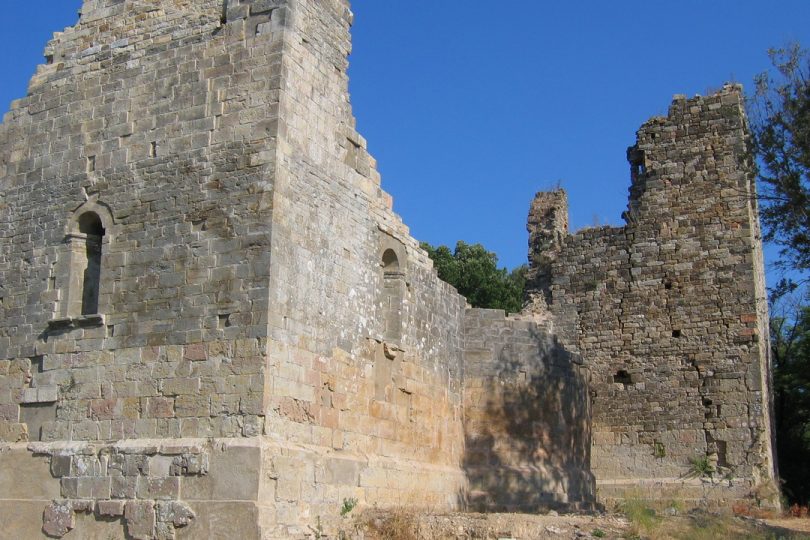Difficulty level
E - TC - T
Mit dem Fahrrad - Gravel
Mit dem Fahrrad - MTB
Zu Fuß
Zu Pferd
Abtei von Monteverdi
This short hike is really suitable for everyone and will take you along a path through the vegetation with amazing scenic views and allow you to discover one of the most interesting cultural and scenic sites, the Abbazia di San Pietro in Palazzolo. The imposing ruins of the abbey are still visible today and are all that remain of the original core founded by the Longobard Walfredo (the most likely founder of the Della Gherardesca family) in 754.
The original site of the monastery dedicated to St Peter, however, is not the one now occupied by the Poggi della Badia, as the abbey, one of the oldest and most important abbeys of medieval Tuscany, was moved here at the end of the 12th century.
The first “version” of the abbey was built about 1 km South of Monteverdi on the site previously occupied by a Roman villa and a Longobard noble settlement (Palatiolum, from which comes the name “in Palazzuolo”). Ever since the founding the monastery had considerable assets in the territories of Populonia, Volterra, Pisa, Lucca and even in Corsica. Subsequently (8th-11th centuries), its possessions expanded and finally peaked in the 11th and 12th centuries, when the monastery’s full jurisdictional power spread over a large area. Ever since its early days (780) the abbey was exposed to Saracen raids and later on it was exposed to harassment and looting by neighbouring lords. For this reason, at the end of the 12th century, the monastery was moved to its present, easier to defend, location. In the first half of the 13th century, however, its decline began: attacked and destroyed by Pannocchieschi di Castiglion Bernardi (1252), in 1298 the abbey was, by papal decree, joined with the abbey of Vallombrosa. After having been severely damaged in 1360 by Pisan soldiers, the abbey of S. Pietro was definitively abandoned in 1561 when the monks moved to the castle of Monteverdi. The imposing, stout remains that can be seen today on the Poggi della Badia are a testimony and description of the defensive and security needs of the former monastery.

